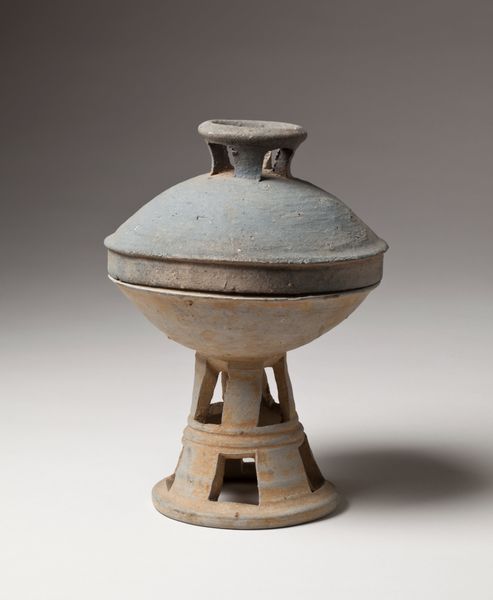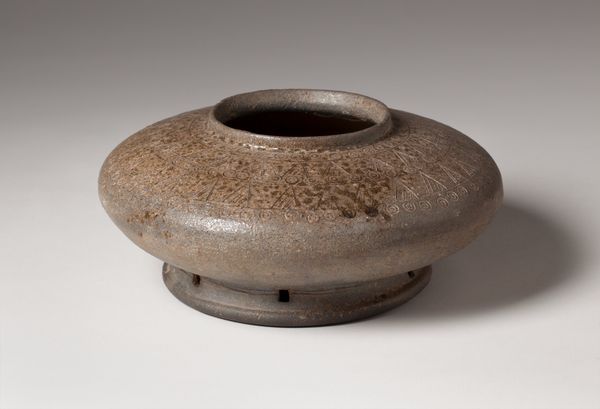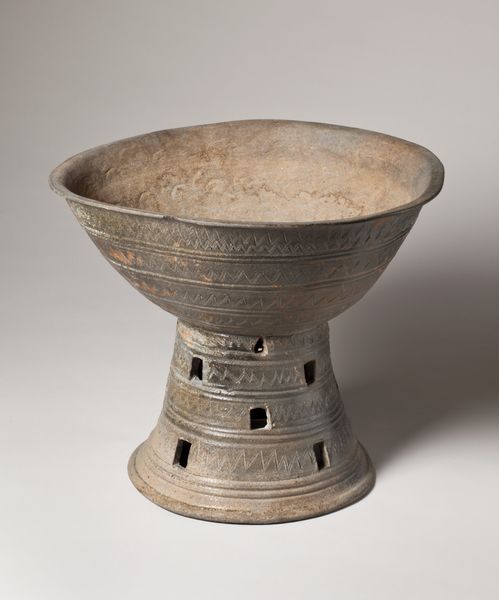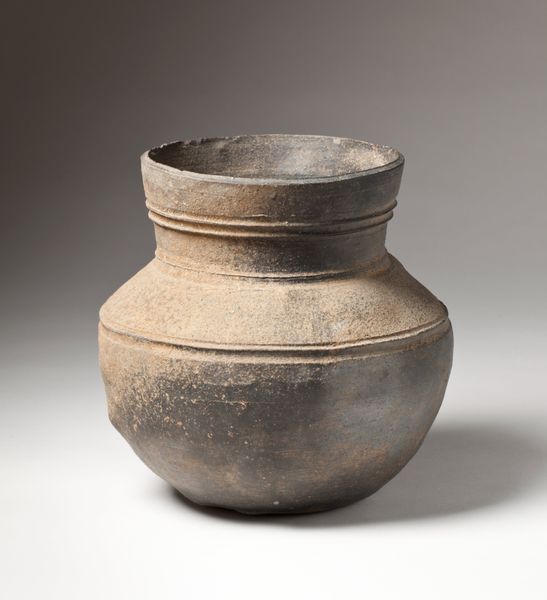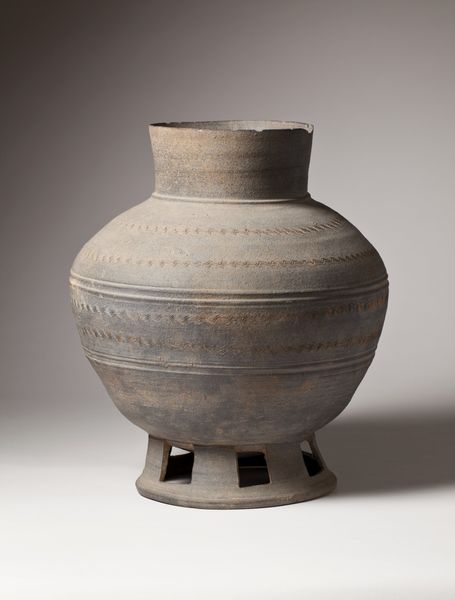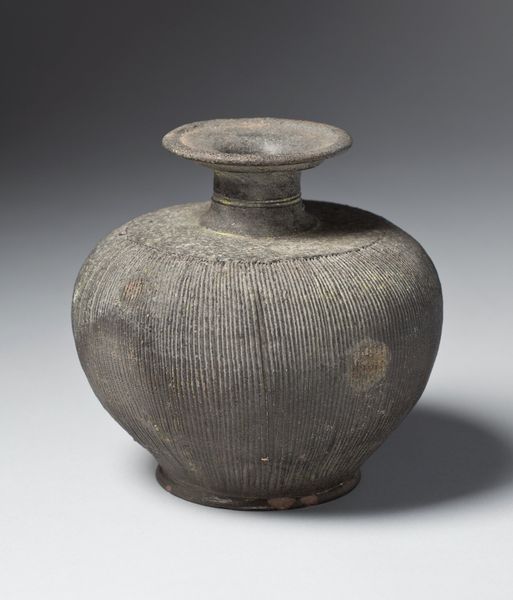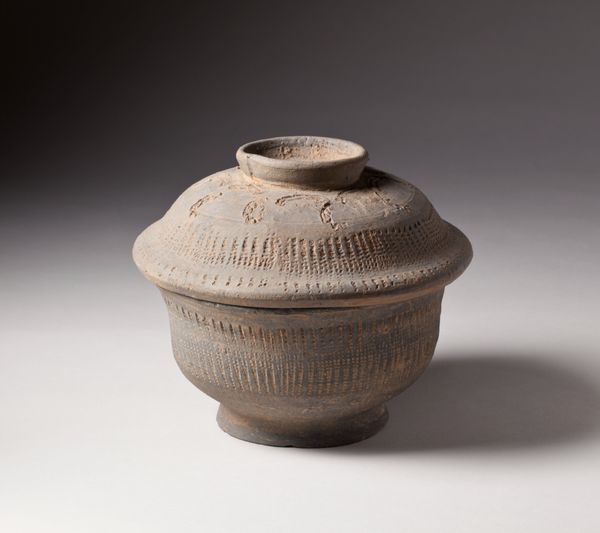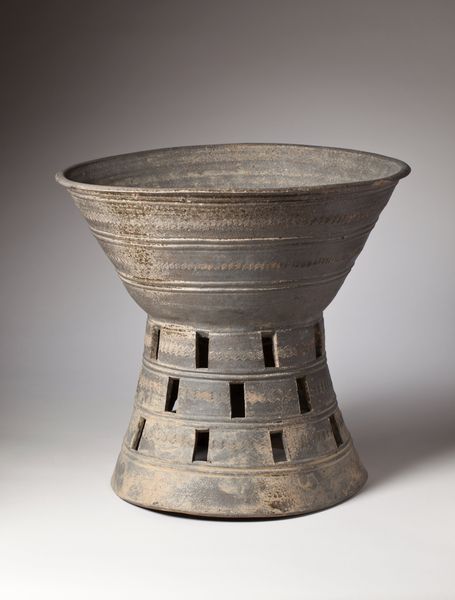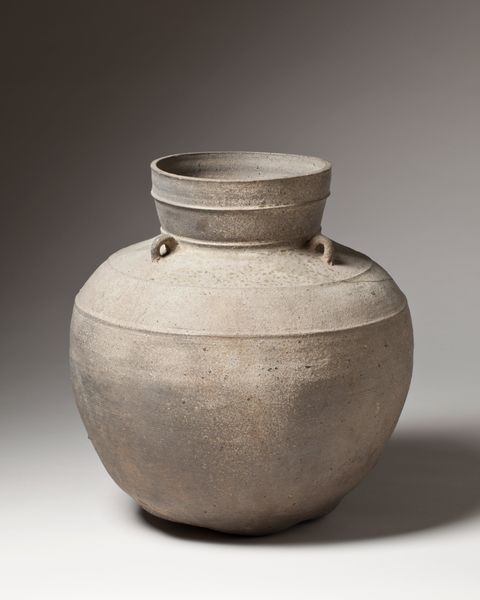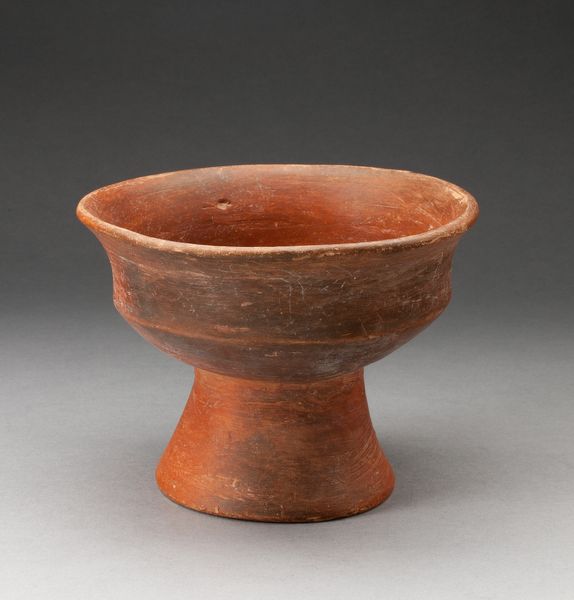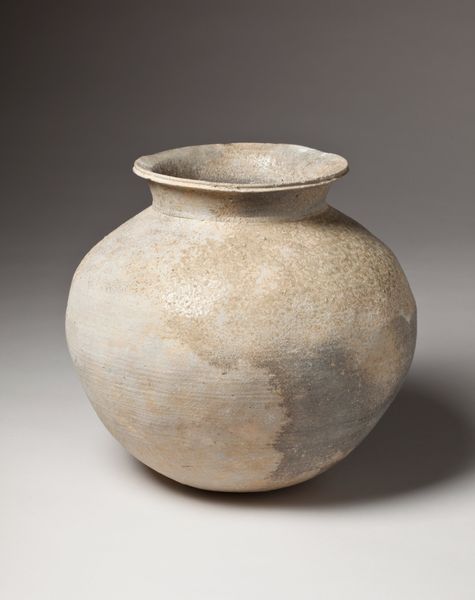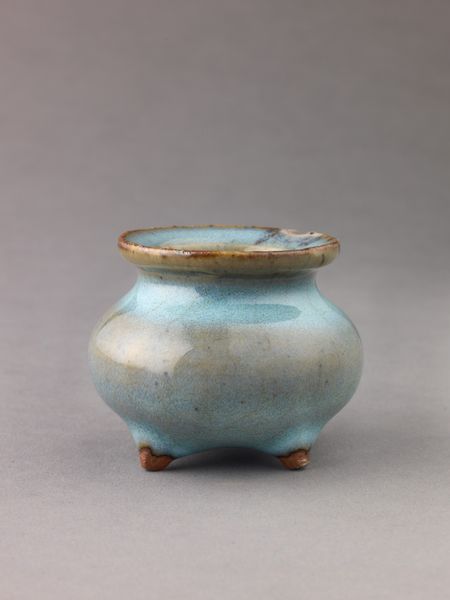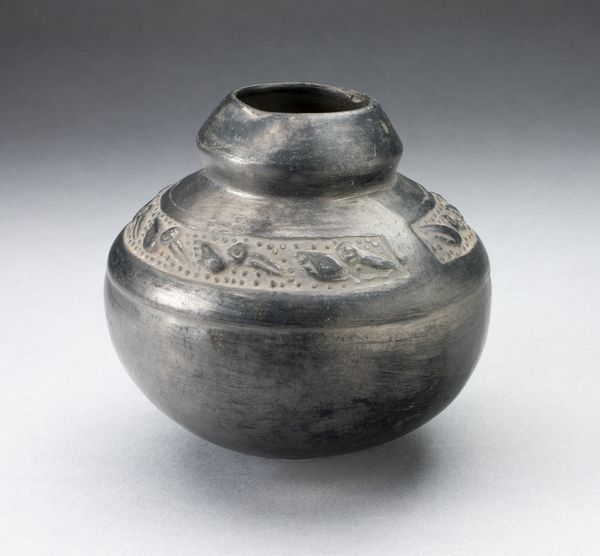
ceramic
#
ceramic
#
form
#
ancient-mediterranean
#
ceramic
Dimensions: 8 1/2 × 7 1/4 × 7 1/4 in. (21.59 × 18.42 × 18.42 cm)
Copyright: Public Domain
Editor: Here we have an ancient ceramic piece titled "Footed Dish with Cover," dating back to around the 6th century. I'm immediately struck by how this everyday object, something so simple, manages to feel both monumental and incredibly delicate at the same time. What do you make of its symbolic weight, looking at it from a cultural lens? Curator: I'm drawn to the continuity in its form. The covered vessel, elevated on a stem, speaks to ideas of reverence and containment – very primal concepts. We see similar forms across many cultures throughout history. What emotional register does it evoke for you? Does it stir thoughts about rituals, burial traditions, offerings perhaps? Editor: Absolutely, I see that. There's something very dignified and almost mournful about its presence. And it definitely brings to mind altars, a sacred holding place. Does the anonymous authorship change your understanding? Curator: Anonymity pushes us further into the realm of shared cultural experience. We're not engaging with an individual's specific artistic expression but with something deeper. Think about how this dish might have functioned within its community. Its utility is secondary to its function as a symbolic object; its primary value lies in its capacity to transmit a set of shared social understandings, acting as an ancestor spirit to cultural practices we continue today. Don't you agree? Editor: That’s insightful, it's interesting to think about its longevity as a common visual theme across time and place. Curator: Indeed. It's not just about looking at an object but perceiving the echoes of shared humanity in its construction and symbolic significance. Editor: I learned so much looking at this work from your iconographic perspective. I see that even humble ceramic objects like this dish can connect us to cultural memories across time. Curator: Precisely! It reminds us to see familiar images not just as shapes, but as containers of a deep reservoir of cultural experience.
Comments
minneapolisinstituteofart almost 2 years ago
⋮
The swollen body of this dish is supported by a tall, narrow foot decorated with thin horizontal lines. Vessels of this type are typical of stoneware produced in Gaya and Silla in southeast Korea, although it is unclear whether they were used in the home or in service to the dead. In the latter case, it would have been used in the ritual presentation of food to the deceased.
Join the conversation
Join millions of artists and users on Artera today and experience the ultimate creative platform.
